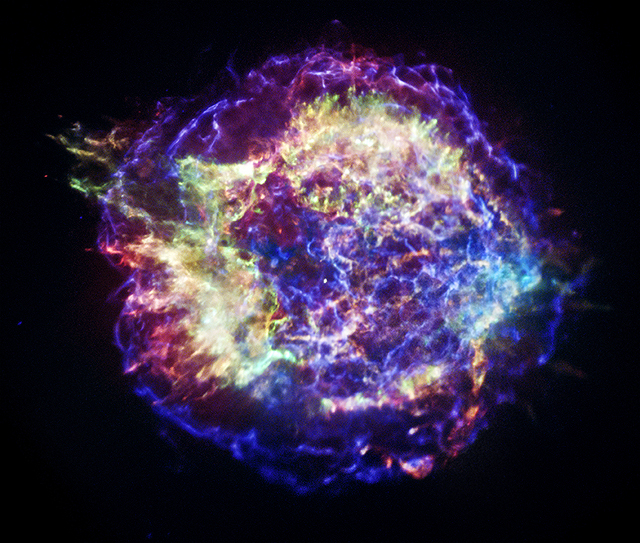Lumps in a supernova reveal nature of explosion—and a mystery
Ars Technica » Scientific Method 2014-02-24

The death of a massive star is among the most energetic events in the cosmos. However, the particular way a star explodes is a matter of some dispute: different theoretical models predict different shapes for the dispersion of material, which in turn affects how new chemical elements forged in the supernova spread out into space. That's a rather significant area of disagreement given that past explosions created many of the chemical elements on Earth.
A new analysis of the remnant of a relatively recent supernova revealed some clear details about the shape of the original explosion. B.W. Grefenstette and colleagues mapped the distribution of radioactive titanium in the Cassiopeia A supernova remnant and found significant asymmetries in its dispersal pattern. The titanium results are congruent with theory, but the researchers also found a striking disconnect between emissions from titanium and those from iron, which is difficult to reconcile with any popular supernova model.
Since there haven't been any recent supernovae to observe in the Milky Way, astronomers must operate forensically, reconstructing the initial explosion from the matter left behind. Thankfully, supernovae are sufficiently energetic that their remnants glow strongly, even centuries after the fact. Even though we haven't observed a Milky Way supernova in our lifetimes, there are a handful of remnants to study using X-ray telescopes and other means.
Read 7 remaining paragraphs | Comments